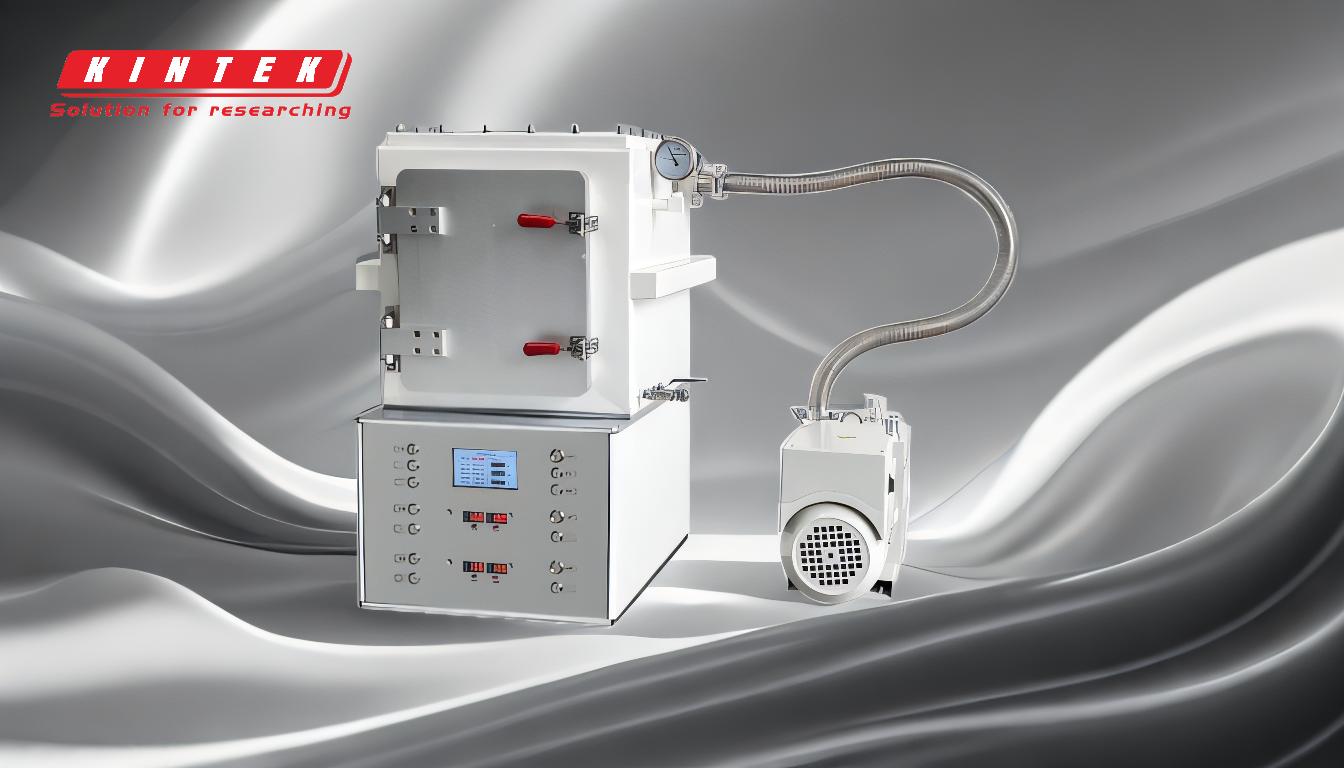Calibrating a lab vacuum pump is a critical process to ensure accurate and reliable performance in laboratory or industrial applications. It involves verifying the pump's ability to achieve and maintain the desired vacuum levels, as well as ensuring that the pressure readings are accurate. The process typically includes selecting the right calibration tools, preparing the pump, performing the calibration, and validating the results. Proper calibration ensures the pump operates efficiently, reduces downtime, and extends its lifespan.
Key Points Explained:

-
Understanding the Importance of Calibration
- Calibration ensures the lab vacuum pump operates within the specified parameters, providing accurate vacuum levels for experiments or processes.
- Regular calibration prevents errors in pressure measurements, which could lead to faulty results or equipment damage.
- It also helps identify wear and tear or potential issues with the pump before they become critical.
-
Gathering the Necessary Tools and Equipment
- A high-quality vacuum gauge or pressure sensor is essential for accurate calibration.
- A reference vacuum source or calibration standard is required to compare the pump's performance.
- Additional tools may include hoses, adapters, and sealing materials to ensure a leak-free connection.
-
Preparing the Vacuum Pump for Calibration
- Ensure the pump is clean and free of debris or contaminants that could affect its performance.
- Check all connections, hoses, and seals for leaks, as even a small leak can compromise calibration accuracy.
- Allow the pump to reach its operating temperature before starting the calibration process.
-
Performing the Calibration Process
- Connect the vacuum gauge or pressure sensor to the pump's inlet or outlet, ensuring a secure and leak-free connection.
- Turn on the pump and allow it to stabilize at its operating pressure.
- Compare the pump's pressure readings with the reference standard or calibration source.
- Adjust the pump's settings or calibration controls if necessary to match the reference values.
-
Validating and Documenting the Results
- After calibration, verify the pump's performance by testing it at different vacuum levels.
- Record the calibration results, including the reference values, measured values, and any adjustments made.
- Document the date of calibration, the tools used, and the technician's details for future reference.
-
Maintenance and Regular Calibration Schedule
- Establish a regular calibration schedule based on the pump's usage and manufacturer recommendations.
- Perform routine maintenance, such as oil changes or filter replacements, to keep the pump in optimal condition.
- Monitor the pump's performance between calibrations to detect any deviations early.
By following these steps, you can ensure that your lab vacuum pump is accurately calibrated and ready for reliable operation. Regular calibration not only maintains the pump's performance but also ensures the integrity of your experiments or processes.
Summary Table:
| Step | Key Actions |
|---|---|
| 1. Importance of Calibration | Ensures accurate vacuum levels, prevents errors, and identifies potential issues. |
| 2. Gather Tools | Use a vacuum gauge, reference source, hoses, adapters, and sealing materials. |
| 3. Prepare the Pump | Clean the pump, check for leaks, and allow it to reach operating temperature. |
| 4. Perform Calibration | Connect tools, stabilize the pump, compare readings, and adjust settings. |
| 5. Validate Results | Test at different vacuum levels, record results, and document details. |
| 6. Maintenance Schedule | Establish regular calibration and maintenance routines for optimal performance. |
Ensure your lab vacuum pump performs at its best—contact our experts today for calibration guidance and support!









